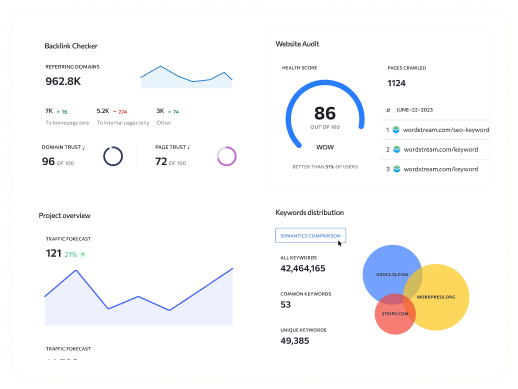In today’s highly competitive car dealership market, reaching the right audience while minimizing ad spend is more challenging than ever. Auto inventory ads have emerged as a game-changing solution, offering car dealerships a way to target in-market buyers efficiently. By utilizing the power of automation and AI, auto inventory ads can dynamically showcase your available inventory, ensuring that your marketing efforts are both cost-effective and impactful. Whether you’re running ads on platforms like Facebook, Google, or others, auto inventory ads keywords automatically update to reflect your available inventory, cutting down on wasted ad spend. This guide will walk you through everything you need to know about auto inventory ads, from setup to optimization, ensuring you get the most out of this powerful tool. Let’s explore how auto inventory ads can boost your dealership’s visibility and sales.
What Are Auto Inventory Ads?
Auto inventory ads are a powerful advertising tool tailored specifically for the automotive industry. These ads allow car dealerships to display their live inventory directly to potential buyers. Unlike traditional ads, auto inventory ads dynamically update based on your available stock, ensuring that the advertisements reflect what you actually have for sale in real-time.
For instance, platforms like Facebook Automotive Inventory Ads and Google Auto Ads make it easy for dealerships to upload their vehicle catalogs. Once integrated, auto inventory ads keywords will automatically pull data from the catalog (such as make, model, price, and location), ensuring the most up-to-date listings are shown to relevant users.
Key Features of Auto Inventory Ads keywords:
- Dynamic Targeting: These ads display to the right people by targeting users who are actively searching for similar vehicles.
- Automated Updates: As inventory changes, ads are updated automatically, preventing ads for vehicles that are no longer available.
The ease and efficiency of auto inventory ads make them an excellent choice for dealerships looking to improve their digital marketing strategy while minimizing the risk of wasted ad spend.
Why Auto Inventory Ads Are Essential for Car Dealerships
- Audience Reach: One of the greatest advantages of auto inventory ads keywords is their ability to target in-market buyers effectively. These ads utilize AI and data-driven algorithms to display your inventory to users who are actively searching for vehicles similar to yours, ensuring that your marketing efforts are focused on high-converting individuals.
- Cost Efficiency: Traditional advertising often results in waste, as ads are shown to people who may not be interested in your offerings. With auto inventory ads, automation minimizes this waste by ensuring that ads are shown only to the most relevant buyers, ultimately helping to reduce your overall ad spend.
- Conversion Potential: The personalized nature of auto inventory ads increases the likelihood of conversions. By showing users exactly what they are looking for, auto inventory ads reduce friction in the sales process and make it easier for potential buyers to take the next step.
- Cross-Platform Reach: You can run auto inventory ads across multiple platforms, including Facebook, Google, and Instagram, allowing you to cast a wide net while still targeting the right audience.
Key Benefits of Auto Inventory Ads keywords
- Dynamic Targeting: Auto inventory ads automatically match ads with relevant buyers using your catalog data, meaning your ads will only be shown to people who are most likely to be interested in your vehicles.
- Improved Local Visibility: With auto inventory ads keywords, you can leverage location-based targeting to ensure that local buyers see your inventory. This feature is essential for dealerships looking to drive traffic from customers in their geographic area.
- Scalability: Unlike traditional ads that require constant manual monitoring and adjustments, auto inventory ads are scalable. Once your inventory feed is set up, you can easily scale campaigns to reach more potential customers without increasing your workload.
- Enhanced User Experience: Auto inventory ads also improve the user experience by integrating features like Facebook Messenger, enabling direct communication between buyers and the dealership. This feature makes it easier for interested customers to reach out, increasing the likelihood of a sale.
How to Set Up Auto Inventory Ads
Setting up auto inventory ads is a straightforward process, but to maximize effectiveness, it’s crucial to follow the correct steps and ensure everything is in place. Here’s a more detailed guide on setting up these dynamic ads:
- Step 1: Create a Catalog or Inventory Feed
The first step in setting up auto inventory ads is creating a catalog of your available vehicles. This catalog serves as the foundation of your ads. You can build your catalog manually by entering vehicle details or by using inventory management software that integrates with platforms like Facebook or Google. The catalog should include essential information about each vehicle, such as:- Make and Model: Specify the exact make and model of each vehicle to ensure proper targeting.
- Price: Ensure that pricing is updated regularly so potential buyers see accurate costs.
- Photos and Descriptions: High-quality images and detailed descriptions will attract more attention from users.
- Stock Availability: Be sure to include stock statuses for each vehicle, which will ensure that ads update automatically if a car sells or goes out of stock.
- Step 2: Integrate Tracking Tools
Once your catalog is created, you’ll need to integrate tracking tools such as Meta Pixel or Google Analytics. These tools help track user behavior on your website, which then informs the platform’s algorithm about who is more likely to convert. For example, Meta Pixel can track when someone views a car or starts a purchasing process. This data will allow you to run retargeting ads to encourage those individuals to come back and complete their purchase. - Step 3: Launch Your Campaign
With your catalog and tracking tools set up, it’s time to create your ad campaigns. Most platforms provide easy-to-use campaign creation tools. On Facebook, you can select “Dynamic Ads” as the campaign objective, which allows your ads to automatically populate with vehicles from your inventory. On Google, you can use “Google Auto Ads,” which enables you to display your inventory in search and display ads. - Step 4: Optimize Your Ads for Performance
Once your campaigns are launched, the next step is optimization. Monitor the performance of each ad to determine which vehicles are driving the most interest and sales. Adjust your targeting or bidding strategies based on the data you gather. You may find that certain car models perform better with certain demographics, which can help you refine your strategy. - Step 5: Automate and Scale
Once you’ve fine-tuned your auto inventory ads, you can automate the process. Platforms like Facebook and Google allow you to set up automated rules for ad spending, making it easier to scale your campaigns. You can also adjust your inventory feed to include new vehicles as they come in and remove sold ones without manual intervention.
Best Practices for Auto Inventory Ads
To get the most out of your auto inventory ads, follow these best practices that can significantly improve the performance of your campaigns:
- High-Quality Images and Descriptions
A picture is worth a thousand words, especially when it comes to car sales. Use high-quality, well-lit images that showcase the car’s key features, such as the exterior, interior, and any unique aspects like a sunroof or leather seats. Write detailed and enticing descriptions that include key selling points such as mileage, engine size, and special offers. High-quality images and detailed descriptions will increase engagement and improve click-through rates (CTR). - Use Dynamic Product Ads
Since auto inventory ads automatically update to show only available stock, make sure to use dynamic product ads. These ads will display products that the potential customer has already shown interest in. If a buyer looks at a specific car on your website, dynamic ads can retarget that individual with the same car, or show similar models that might interest them. - Refine Audience Targeting
Targeting is key to ensuring your auto inventory ads reach the right buyers. Use platforms like Facebook and Google to segment your audience based on their behavior and interests. For example, you can target people who have visited car review websites or who have engaged with ads for similar car models. Refine your audience by demographics such as age, location, income level, and more to make your ads more personalized and increase conversion rates. - Utilize Retargeting
Since auto inventory ads can track visitor behavior through tools like Meta Pixel or Google Analytics, take advantage of retargeting. If someone has visited your website and shown interest in a vehicle but didn’t make a purchase, use retargeting to display that car again or other similar vehicles. This keeps your dealership top of mind and gives potential buyers the opportunity to return and complete their purchase. - Keep Inventory Feed Up to Date
Make sure your inventory feed is always accurate and updated in real time. If a car sells or is no longer available, it’s essential that it is removed from the catalog feed. Similarly, if new inventory arrives, add it promptly to avoid missing out on showing fresh cars to interested buyers. The effectiveness of auto inventory ads keywords depends on the accuracy and timeliness of your data. - Test and Experiment
Don’t be afraid to experiment with different strategies. Test different ad formats, targeting methods, or messaging. You can use A/B testing to find which ads perform best and refine your strategy accordingly. Testing is essential for optimizing your campaigns and improving your ROI.
Tools to Enhance Auto Inventory Ads
Several tools and platforms can help streamline the creation, management, and optimization of auto inventory ads. These tools will enhance the effectiveness of your campaigns and provide deeper insights into performance:
- Facebook Ads Manager
Facebook Ads Manager is a powerful tool for managing auto inventory ads. It allows you to create and monitor dynamic ads, set automated rules, track performance, and optimize campaigns for better results. Its robust reporting features allow you to analyze the effectiveness of different vehicles and ad types, helping you allocate your budget more effectively. - Google Auto Ads
Google Auto Ads allows you to display your inventory across Google Search, Display Network, and YouTube. Google’s vast reach and robust targeting options make it an ideal platform for auto inventory ads. You can integrate your inventory feed with Google Merchant Center to show live vehicle data, such as pricing and availability. - MatchCraft’s AdVantage Auto
MatchCraft’s AdVantage Auto is designed specifically for dealerships, automating the management and optimization of auto inventory ads. It’s a great tool for enhancing ad performance and streamlining your inventory ad process. The tool uses real-time data to manage ad spending, audience targeting, and inventory updates. - Dealer.com
Dealer.com provides a comprehensive platform for digital marketing in the automotive industry. It integrates with multiple ad platforms to display dynamic inventory ads and allows you to manage your ads, website, and leads from a single platform. It also offers tools to enhance your local SEO, making it easier for nearby customers to find your dealership. - Cox Automotive
Cox Automotive offers tools that help car dealerships manage and optimize their digital marketing campaigns, including auto inventory ads. Their tools provide insights into ad performance, audience targeting, and inventory management. Cox Automotive’s platforms also integrate seamlessly with other popular marketing tools to provide a comprehensive solution for auto ads.
Common Challenges and How to Overcome Them
While auto inventory ads can be highly effective, there are a few challenges that car dealerships may face. Here’s how to address them:
- Challenge: Setting Up and Maintaining Inventory Feeds
Solution: Keeping your inventory feed up to date can be time-consuming. However, integrating your inventory system with ad platforms like Facebook and Google can automate much of the process. Regularly check that the integration is working correctly to avoid issues with outdated stock listings. - Challenge: Ad Spend Optimization
Solution: Optimize ad spend by leveraging the automation features in platforms like Facebook and Google. Set clear objectives for your campaigns, such as sales or leads, and allow the platform’s AI to adjust bids and budget accordingly. You can also use retargeting to ensure your ads are shown to high-intent buyers. - Challenge: Competition in Local Markets
Solution: Differentiate your ads by using unique selling points (USPs). Highlight special offers, customer testimonials, or exclusive promotions in your auto inventory ads. Additionally, ensure that your location targeting is fine-tuned so that your ads are shown to users within your service area. - Challenge: Difficulty in Analyzing Performance
Solution: Utilize tools like Facebook Ads Manager or Google Analytics to track key metrics such as CTR, conversions, and ROI. Regularly review ad performance and adjust your campaigns based on the data. This allows you to make informed decisions and continuously improve your ads’ effectiveness. - Challenge: Ensuring Accurate Data Across Platforms
Solution: Consistently update your inventory data across all platforms. Automation tools and API integrations between your inventory system and advertising platforms can help ensure that your data remains consistent and accurate.
Case Studies: Success Stories with Auto Inventory Ads
Several car dealerships have achieved great success with auto inventory ads. For instance, a dealership in Miami used dynamic targeting to promote their new inventory, resulting in a 40% increase in conversions and a 25% reduction in wasted ad spend. By leveraging the automation and AI capabilities of auto inventory ads keywords, the dealership was able to attract more qualified leads and close more sales.
Conclusion
In conclusion, auto inventory ads are a must-have for car dealerships looking to maximize their advertising ROI. By using automation to dynamically showcase your inventory and target the right audience, auto inventory ads ensure that your marketing efforts are both efficient and effective. Whether you’re advertising on Facebook, Google, or another platform, these ads offer unparalleled benefits that traditional ads simply cannot match.
Get started with auto inventory ads today and experience firsthand how they can transform your car dealership’s marketing strategy.
Note: Read Our Latest Blogs on Marketing, AI, and SEO:
AI generator text | How to go live on TikTok | Reword.co Alternatives | TikTok search | How old is Google? | SEMrush vs SpyFu | Google alternatives | AnswerThePublic alternative | Sudowrite | SEMrush pricing | How many subscribers does MrBeast have? | When was Instagram created? | Subject matter expert | AI email writer | Ahrefs pricing | Ahref vs Moz | How many people use Google? | SE Ranking | SEO consulting | SEO consultant near me | SEMrush vs Moz | How to use LinkedIn | SEO for dentists | Simplified alternatives | SEO software for agencies | Are AI detectors accurate? | SEO tracking | Trademark symbol | ChatGPT plugins | GPT builder | Auto inventory ads keyword | BigCommerce pricing | Etsy SEO | How do AI detectors work? | ChatGPT detector | Affordable SEO | Meta employee count | SEO automation software | SEMrush alternative | How many pictures can you post on Instagram? | SEO for plumbers
Frequently Asked Questions
Q1. What are auto inventory ads?
Ans: Auto inventory ads are dynamic ads that display live vehicle inventory to potential buyers, automatically updating based on stock availability.
Q2. How do I create a catalog feed for auto inventory ads?
Ans: Create a catalog feed by uploading vehicle details such as make, model, and price through platforms like Meta’s Commerce Manager or Google Merchant Center.
Q3. Can I run auto inventory ads on Facebook and Google?
Ans: Yes, auto inventory ads can be run on both Facebook and Google, allowing you to reach a broader audience across multiple platforms.
Q4. What tools can help manage auto inventory ads?
Ans: Platforms like Facebook Ads Manager, Google Auto Ads, and MatchCraft’s AdVantage Auto can help you automate and optimize auto inventory ads campaigns.
Q5. Can auto inventory ads target local customers?
Ans: Yes, auto inventory ads allow for location-based targeting, ensuring that local customers see your inventory.
Q6. How do I track performance for auto inventory ads?
Ans: Use tracking tools like Meta Pixel or Google Analytics to monitor metrics such as impressions, conversions, and ROI.
Q7. Can auto inventory ads help scale my advertising efforts?
Ans: Yes, auto inventory ads are highly scalable, enabling you to increase reach without additional manual effort.
Q8. How can I improve my auto inventory ads performance?
Ans: Optimize your ads by using high-quality images, refining targeting, and regularly monitoring ad performance to make data-driven adjustments.





